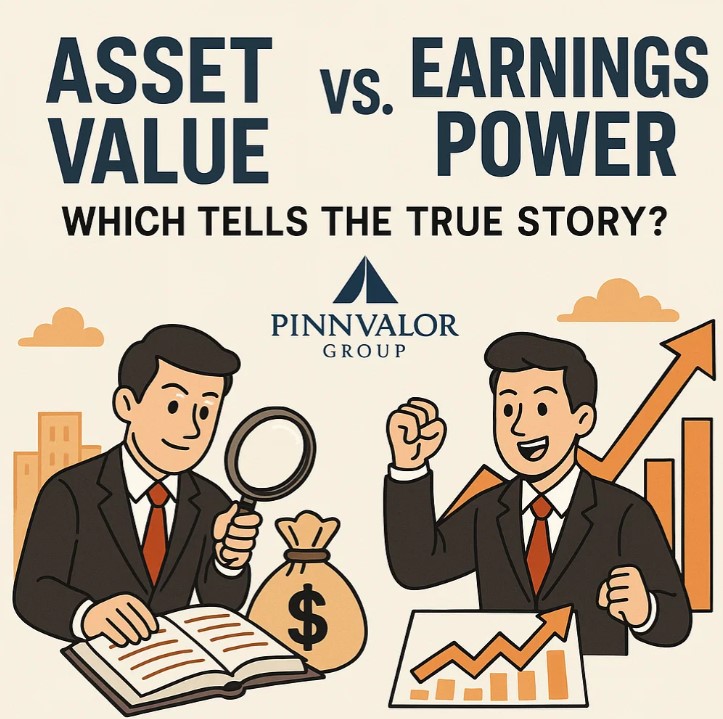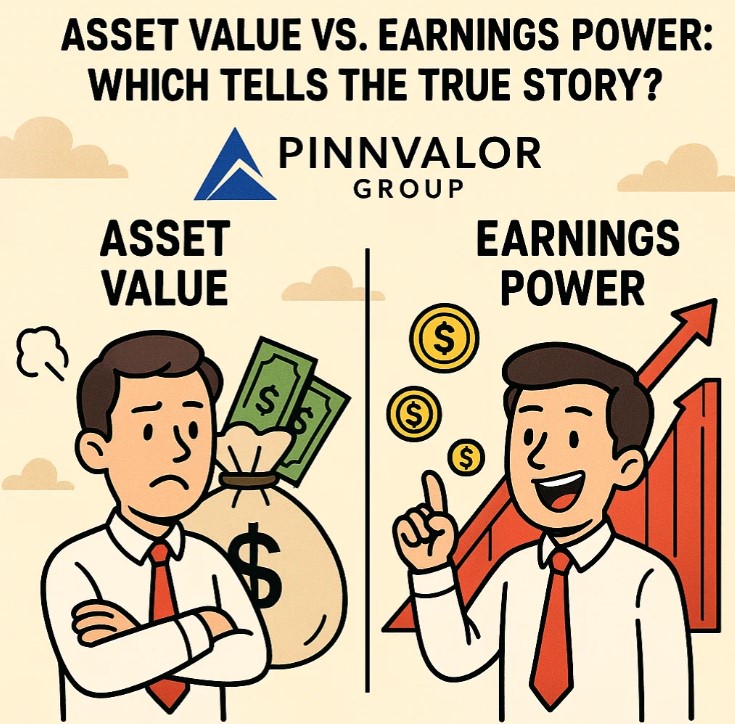
Asset Value vs. Earnings Power: Which Tells the True Story?
In the world of business valuation, one question often sparks debate among investors, analysts, and business owners: What truly defines a company’s worth — its asset base or its earning potential? This fundamental question has shaped valuation strategies for decades and continues to be relevant in today’s dynamic economic landscape.
Let’s dive into the two primary schools of thought — Asset-Based Valuation and Earnings-Based Valuation — and explore which method provides a more accurate reflection of a company’s value.
Does a company’s true worth lie in its assets or its ability to generate profit?
Stable firms lean on assets, growth firms on earnings — but the best approach combines them both. Because in business, past foundation and future potential go hand in hand.
🔹 Asset-Based Valuation: What You Own
Asset-based valuation focuses on the net worth of a company's tangible and intangible assets. It answers the question: What would it cost to recreate or replace this business from scratch?
Key Features:- Based on the company’s balance sheet.
- Considers assets like machinery, buildings, inventory, cash, and intellectual property.
- Deducts liabilities to arrive at Net Asset Value (NAV).
- For capital-intensive businesses (e.g., manufacturing, real estate).
- In liquidation scenarios or M&A deals.
- When earnings are unpredictable or negative.
- Grounded in tangible facts.
- Useful for asset-heavy businesses.
- Offers a clear snapshot of financial health.
- May undervalue companies with strong growth potential.
- Ignores intangible factors like brand value, market share, or customer loyalty.
- Doesn’t capture future earning potential.
🔹 Earnings-Based Valuation: What You Earn
This method emphasizes a company’s ability to generate future income. It’s based on expected profits and how reliably those profits can be sustained or grown.
Key Techniques:- Discounted Cash Flow (DCF): Projects future cash flows and discounts them back to present value.
- Price-to-Earnings (P/E) and EV/EBITDA Multiples: Compares profitability ratios with peers or industry standards.
- For service-based or tech companies.
- When future profitability is a key value driver.
- In growth-stage businesses.
- Reflects earning potential and future performance.
- Aligns with how markets price companies.
- Captures the value of intangibles and goodwill.
- Highly sensitive to assumptions (growth rate, discount rate).
- Can be misleading if projections are overly optimistic.
- Less useful for firms with volatile or unstable earnings.

Which One Tells the “True” Story?
The answer isn’t black and white — it depends on the context.
| Scenario | Better Approach |
|---|---|
| Company with consistent profits and growth | Earnings-Based |
| Company with valuable physical or intangible assets but low profits | Asset-Based |
| Early-stage startup with minimal assets but high potential | Earnings-Based |
| Distressed or liquidating business | Asset-Based |
| Highly regulated or capital-intensive sectors | Asset-Based |
The Smartest Valuations Use Both
In reality, seasoned investors and valuation professionals rarely rely on a single method. They often blend both approaches to get a more comprehensive view:
- Weighted Average Valuation: Assigning weights to both asset and earnings values.
- Sanity Check: Using asset value as a floor and earnings-based value as a ceiling.
- Cross-Verification: Checking if the earning potential justifies the asset base or vice versa.
Conclusion: Value is More Than Numbers
At its core, valuation is not just a math exercise — it's an interpretation of a company’s story, strategy, and sustainability. Asset-based valuation shows what the company is built on, while earnings-based valuation reveals what the company can build in the future.
So, which tells the true story? Perhaps the better question is: Are you valuing the past or the future?
For stable, asset-heavy firms, asset value often gives a reliable picture. For growth-oriented, innovation-driven businesses, earnings power speaks louder. The smartest valuations consider both perspectives — because in business, what you own and what you earn both matter.
